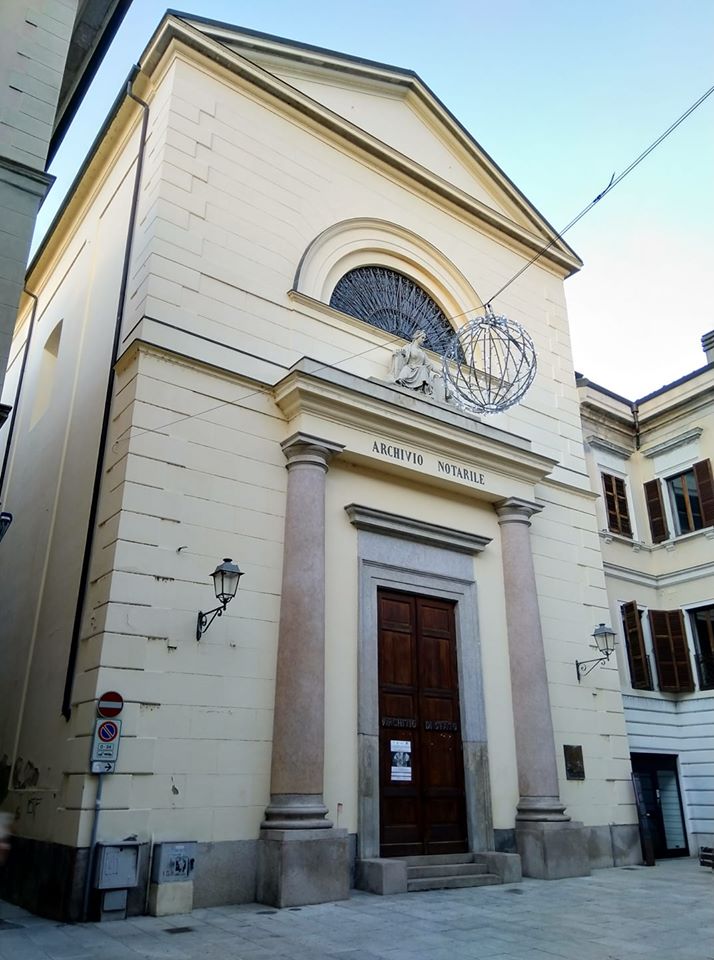The site of the Institution, at no. 2 Via dell’Archivio, occupies a portion of the old monastery of St. Mary Magdalene, which in the 17th century occupied the entire block, including what are now Via Silvio Pellico (east), Corso Cavallotti (south), Via Mario Greppi (north) and Via dell’Archivio (west). The monastery was suppressed in 1799 and the sectioning off of the convent began in 1804 with the majority of the buildings used for the Classical Lyceum established by Napoleon Bonaparte. The Notarial Acts Archive was established in the remaining rooms, the redevelopment of which was overseen by Luigi Orelli, one of the most active architects of the era, who designed and built the grandiose three-tiered walnut shelving (2340 metres of usable space - 117 sections) against the walls of the former church of St. Mary Magdalene, annexed to the convent. In 1823, the building was acquired by the Municipality of Novara, which, in 1851, commissioned architect Antonio Busser to renovate the façade, on whose archivolt the high relief depicting the Genio della Conservazione, a work of sculptor Giuseppe Ardenti, was located.
Following some reconversion work, the State Archive took residence in these rooms in 1972. In 1987, the site was expanded with the acquisition of adjoining spaces in the 18th century-Casa Andreoni, and in 1997, a public building adjacent to the rooms on Via dell’Archivio was given over to the State Archive. Work on the functional and structural adaptation of the entire site of the Institution began two years later, concluding with the opening on 31 May 2007. As a result, new underground storage rooms, equipped with all necessary measures for the preservation of the archives and the safety of staff, were created on two floors. The site of the Institution currently possesses rooms and systems consistent with its institutional role and is able to guarantee quality services for visitors and schools.


